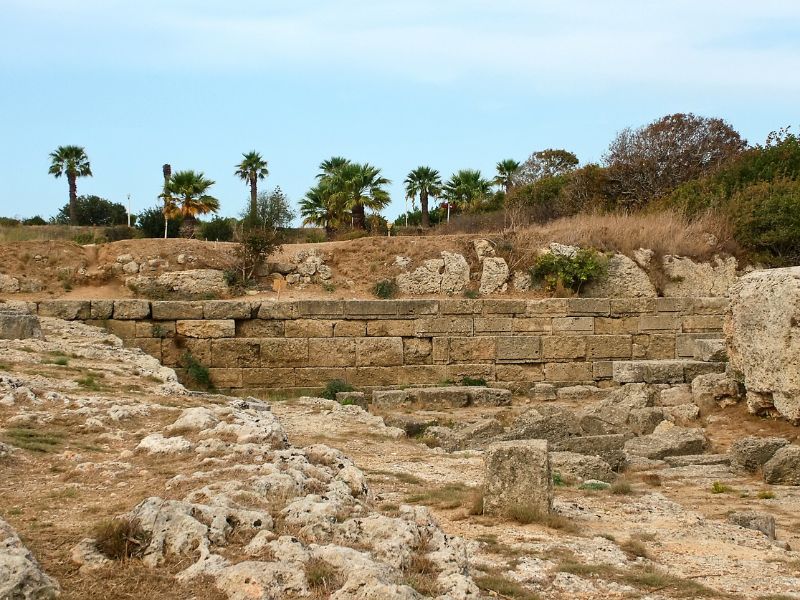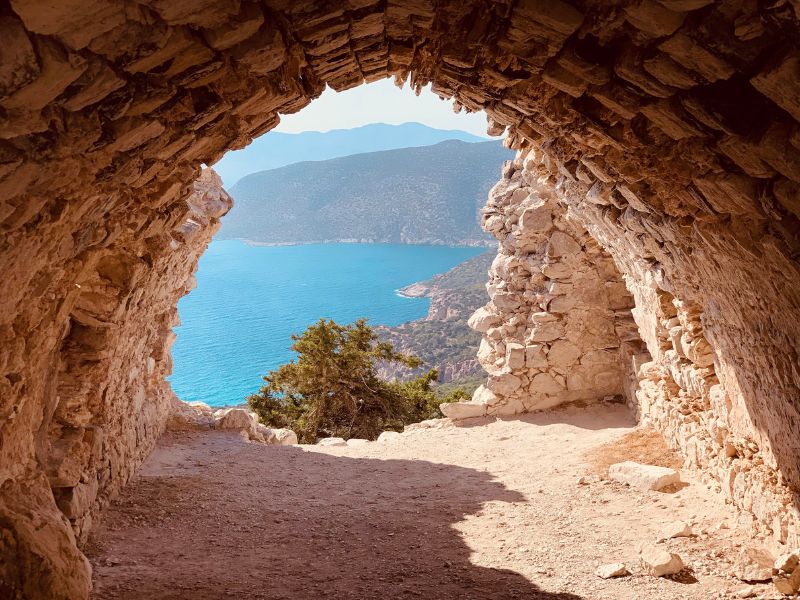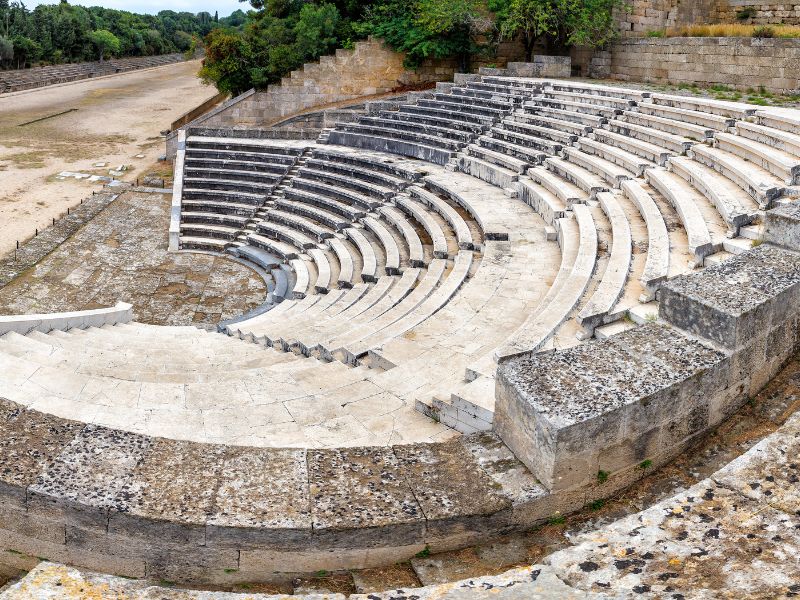
Gymnasium of Rhodes: A Place to Train Your Body and Mind
May 4, 2025
Ancient Sanctuaries of Rhodes: Between Stone and Spirit
May 12, 2025Table of Contents
When Light Guided the Island
High above the harbours of Rhodes, where the Aegean sky turns silver at dawn, the worship of Apollo in Rhodes once defined what it meant to live well. On the terraces of the ancient Acropolis, faith, reason, and beauty seemed to walk side by side.
To the Rhodians, Apollo was not some distant god. He was the pulse of light itself — the measure of law, truth, and proportion. His brilliance touched both marble and mind. From his sanctuary on Monte Smith, he watched over a city that prized order yet still dreamed in poetry.
It’s strange, perhaps, how a god can become a mirror for a whole people. But in Rhodes, that’s exactly what happened.
The Heart of the Acropolis – Temple of Apollo Pythios

At the summit of the Acropolis stood the Doric Temple of Apollo Pythios, the island’s holiest shrine. It rose above the city like a crown, its columns catching the sun long before the streets below awoke. Built in the Hellenistic era, sometime around the 3rd century BC, it embodied everything the Rhodians believed in: symmetry, intellect, and light.
Each morning, the first rays of the sun slid between the columns, bathing the stone in gold. That moment — so simple, so silent — was a prayer in itself. The temple’s east–west design wasn’t just architectural precision. It was a declaration of faith.
The stairway that led to it wound upward, deliberately. You didn’t rush toward Apollo; you ascended. Step by step, away from the noise of the city, into the brightness of the divine. Even today, as you climb those same steps, it’s easy to imagine the feeling — the hush, the light, the stillness before the first hymn began.
Apollo, Keeper of Law and Civic Order
The worship of Apollo in Rhodes shaped not only religion but governance. Apollo was Polieus here — protector of the city, guardian of justice. His tripod, carved on coins and carved in stone, symbolized more than prophecy. It represented wisdom, balance, and the courage to speak truth.
Public oaths were sworn in his name. Laws were debated under his gaze. The Rhodians believed that light — literal or moral — revealed everything worth seeing. The city’s diplomacy, its rhetoric, even its education all carried his influence.
Words were expected to be measured, speech to be clear, and action to be balanced. To live as a Rhodian was, in a way, to live as Apollo’s student.
Festivals of Light and Harmony

Once a year, the city became a living hymn during the great Halieia festival. The island honoured both Helios, its sun god, and Apollo, master of light.
For days, the stadium echoed with cheers — chariot races, athletic contests, music, dance. Everything done in rhythm, in harmony, as if the entire island were one great orchestra.
The processions began at the gymnasium and wound their way up toward the Acropolis. Worshippers carried garlands and lamps, and as they climbed, the light of their offerings mingled with the rising sun. You can almost picture it: the shimmer of bronze, the scent of olive branches, the steady hum of hymns.
To the Rhodians, these were not just games or rituals. They were reminders. Strength, beauty, and intellect were all forms of worship — expressions of the same sacred light.
The Light That Shaped a People

To understand the worship of Apollo in Rhodes is to understand what it meant to be Rhodian. Light wasn’t just a physical force here. It was knowledge. It was justice. It was creation itself.
The Acropolis mirrored that belief. The gymnasium for training, the odeon for music, the library for thought — each building complemented the next like notes in a melody. Together they formed a landscape of harmony. Even nature seemed to participate: the sea mirrored the sky, and the wind carried a rhythm of its own.
Standing there, you sense why Apollo mattered so much. He wasn’t only worshipped in temples — he lived in geometry, in poetry, in the sunlight that touched every stone.
Conclusion – The Light That Never Left
The worship of Apollo in Rhodes was more than ceremony. It was a philosophy made visible, a belief that light and order could build a better world.
Even now, the ruins still speak. Each column that glows at sunrise whispers the same old truth — that wisdom and beauty belong to those who seek balance.
And if you linger a little, watching the light stretch across the sea, you might feel it too: that quiet clarity the Rhodians once felt every morning. Apollo is still there… in the air, in the calm, in the light that refuses to fade.



